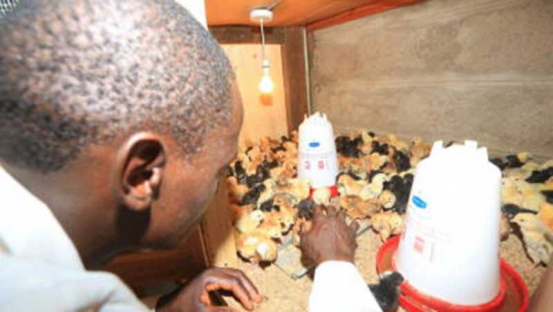
One of my clients, James Njogu has been a chicken farmer for close to 10 years now. I met Njogu in one of the poultry farmers’ training session we held in Thika town last year. For the 10 year she has reared poultry, he focused mostly on commercial exotic layers with a few kienyeji birds just for household consumption.
After the training, he decided to increase his improved kienyeji number and bought 200 day-old chicks. Like I do with most of my clients, I check on their progress.
One of the challenges that Njogu faced in his farm was mite infestation— the red ones in particular. He also mentioned recurring cases of coccidiosis. When I visited his farm, I noted hygiene was a big concern.
I prescribed a hygienic compound which has disinfection effects and is environment-friendly. The compound is a drying agent which dehydrates the most common sources of bacteria and infection. Its ability to dehydrate wet bedding removes the possibility of maggots or larvae from striking.
One of the most common of these compounds is called Staldren which has been used extensively in poultry houses in Europe and South America.
It decreases the amount of red mites in layer houses by 95 per cent. The product is a hygiene solution in powder form which has a broad spectrum effect against bacteria and fungal spores.
It also decreases dampness and smells from wet litter. Njogu did as I had advised. He followed the application instructions and he has successfully controlled the mites and his flock is now happy. His farm has also not experienced a recurrence of coccidiosis for the last four months.
The compound is applied on surfaces inside the poultry house including litter, nesting/laying boxes and can also be used as a dry foot bath at the entrance of the poultry house. It should be mixed together with litter before a new flock/day old chicks are introduced into the coop.
Since it is non-toxic, it is not poisonous even when ingested and helps in keeping the digestive tract healthy.
It works against bacteria such as E-coli, salmonella, campylobacter and streptococcus, and thus, reduces the bacterial as well as the fungal load in the poultry house. It should be applied in the laying boxes every two weeks for maximum effect on the mites.
Since it binds ammonia in the litter and dries up the moisture, it helps in reducing cases of chronic respiratory diseases and decrease cases of foot pad burns (dermatitis), a condition caused by wet and sticky litter. The litter quality is therefore improved since it remains dry.
Cases of diarrhoea caused mostly by E-coli bacteria have also been reduced in farms which use the compound.
Due to its disinfection properties, it is used in dairy farming as well as in pig production. It is applied in the animal’s pen for hygienic purposes.
-The writer is a vet surgeon and runs Nature Kuku, a farm in Naivasha that produces kuku kienyeji breed and trains small holder farmers.
Stay informed. Subscribe to our newsletter
[email protected]
 The Standard Group Plc is a
multi-media organization with investments in media platforms spanning newspaper
print operations, television, radio broadcasting, digital and online services. The
Standard Group is recognized as a leading multi-media house in Kenya with a key
influence in matters of national and international interest.
The Standard Group Plc is a
multi-media organization with investments in media platforms spanning newspaper
print operations, television, radio broadcasting, digital and online services. The
Standard Group is recognized as a leading multi-media house in Kenya with a key
influence in matters of national and international interest.
 The Standard Group Plc is a
multi-media organization with investments in media platforms spanning newspaper
print operations, television, radio broadcasting, digital and online services. The
Standard Group is recognized as a leading multi-media house in Kenya with a key
influence in matters of national and international interest.
The Standard Group Plc is a
multi-media organization with investments in media platforms spanning newspaper
print operations, television, radio broadcasting, digital and online services. The
Standard Group is recognized as a leading multi-media house in Kenya with a key
influence in matters of national and international interest.






